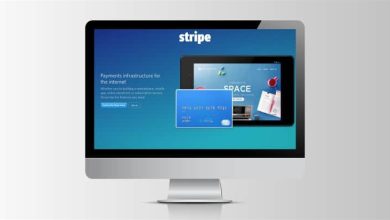FedNow's Evolution Six Months In

In a significant development, the FedNow Service, six months post-launch, has commenced the new year with an impressive participation of 400 institutions as senders or receivers on its network. Reflecting a diverse array of banks and credit unions across 45 states, these institutions vary in size, ranging from under $500 million to over $3 trillion in assets.
The FedNow Service, which initially launched with 35 participating institutions in July, has witnessed remarkable adoption, signaling strong network growth anticipated throughout 2024. As the Federal Reserve Banks aim to broaden accessibility to the FedNow Service, the growing engagement underscores the financial industry’s embrace of this modern instant payments system.
Robust Adoption and Growing Diversity
- Steady growth: The FedNow Service’s adoption surge from 35 to 400 institutions within six months underscores the financial sector’s readiness for modern instant payment solutions. This growth is indicative of a broader industry shift towards embracing real-time payment alternatives.
- Diverse participant landscape: The inclusion of institutions of various sizes and geographical locations emphasizes the accessibility and relevance of the FedNow Service across the financial spectrum. From community banks to major credit unions, the diverse participant base reflects the widespread appeal of instant payment capabilities.
Federal Reserve’s Optimistic Outlook:
- Positive transition: As the FedNow Service transitions from its initial launch phase to standard operations, the positive reception and robust adoption are commendable. Ken Montgomery, First Vice President of the Federal Reserve Bank of Boston and FedNow Program Executive, expresses satisfaction with the early successes and acknowledges the support from financial institutions, service providers, and industry players.
- Anticipated growth: The Federal Reserve Banks project a continuation of strong network growth in 2024, leveraging their extensive connections with thousands of financial institutions nationwide. This outlook reinforces the belief that the FedNow Service is well-positioned to meet the increasing demand for instant payments.
Diverse Use Cases and Industry Innovations:
- Plaid’s fintech integration: California-based fintech Plaid’s innovative use of the FedNow Service stands out, demonstrating its ability to facilitate instant payouts for various financial activities, including investments, payroll, loan disbursements, insurance claims, and instant microdeposits. Plaid’s application of the FedNow Service addresses a common pain point by reducing settlement times for microdeposits, providing a swift and efficient solution.
- Government collaboration: The Commonwealth of Virginia’s Treasury Department showcases the broader societal impact of the FedNow Service. Collaborating with its human resources agency, Virginia’s Treasury Department successfully disbursed instant payments to charitable organizations during a workplace giving campaign. This example underscores the diverse and meaningful use cases that extend beyond the private sector into public initiatives.
Promising Instant Payment Use Cases:
- Varied transactions: Participants in the FedNow Service have cited an array of promising instant payment use cases, including account-to-account transfers for personal transactions, earned wage access, instant auto purchases, and streamlined business payments. This diversity highlights the versatility of the FedNow Service in addressing a wide range of financial needs and scenarios.
Intensity of Competitive Rivalry:
The landscape of real-time payment systems is witnessing a moderate to high intensity of competitive rivalry, and the FedNow Service has emerged as a pivotal player in this dynamic arena. As financial institutions increasingly seek modern, efficient payment solutions, the competition among real-time payment providers has intensified. The success of the FedNow Service hinges on its ability to navigate and lead this competitive landscape.
Participating institutions, numbering 400 and counting, indicate a substantial vote of confidence in the FedNow Service. Yet, the evolving fintech landscape demands a continual commitment to innovation and adaptability. As demonstrated by the diverse use cases presented by participants, the FedNow Service aims not only to keep pace with industry demands but to set new standards for real-time payments. Collaborations, partnerships, and the ongoing exploration of innovative applications will be critical in maintaining a competitive edge.
The FedNow Service, backed by the Federal Reserve’s authority and the momentum of its growing participant base, stands ready to not only withstand the competition but to shape the future of instant payments on a national scale. The intensity of competitive rivalry serves as a catalyst for ongoing advancements, ensuring that the FedNow Service remains at the forefront of transformative developments in the payments industry.
Conclusion
The FedNow Service’s strong start to 2024, marked by a growing participant base and innovative use cases, signals a transformative phase in the financial industry’s adoption of instant payments. Payment industry professionals should take note of this momentum, recognizing the potential of the FedNow Service to reshape transactional norms and foster a more efficient, inclusive, and diverse financial ecosystem.
In a significant development, the FedNow Service, six months post-launch, has commenced the new year with an impressive participation of 400 institutions as senders or receivers on its network. Reflecting a diverse array of banks and credit unions across 45 states, these institutions vary in size, ranging from under $500 million to over $3 trillion in assets.
The FedNow Service, which initially launched with 35 participating institutions in July, has witnessed remarkable adoption, signaling strong network growth anticipated throughout 2024. As the Federal Reserve Banks aim to broaden accessibility to the FedNow Service, the growing engagement underscores the financial industry’s embrace of this modern instant payments system.
Robust Adoption and Growing Diversity
- Steady growth: The FedNow Service’s adoption surge from 35 to 400 institutions within six months underscores the financial sector’s readiness for modern instant payment solutions. This growth is indicative of a broader industry shift towards embracing real-time payment alternatives.
- Diverse participant landscape: The inclusion of institutions of various sizes and geographical locations emphasizes the accessibility and relevance of the FedNow Service across the financial spectrum. From community banks to major credit unions, the diverse participant base reflects the widespread appeal of instant payment capabilities.
Federal Reserve’s Optimistic Outlook:
- Positive transition: As the FedNow Service transitions from its initial launch phase to standard operations, the positive reception and robust adoption are commendable. Ken Montgomery, First Vice President of the Federal Reserve Bank of Boston and FedNow Program Executive, expresses satisfaction with the early successes and acknowledges the support from financial institutions, service providers, and industry players.
- Anticipated growth: The Federal Reserve Banks project a continuation of strong network growth in 2024, leveraging their extensive connections with thousands of financial institutions nationwide. This outlook reinforces the belief that the FedNow Service is well-positioned to meet the increasing demand for instant payments.
Diverse Use Cases and Industry Innovations:
- Plaid’s fintech integration: California-based fintech Plaid’s innovative use of the FedNow Service stands out, demonstrating its ability to facilitate instant payouts for various financial activities, including investments, payroll, loan disbursements, insurance claims, and instant microdeposits. Plaid’s application of the FedNow Service addresses a common pain point by reducing settlement times for microdeposits, providing a swift and efficient solution.
- Government collaboration: The Commonwealth of Virginia’s Treasury Department showcases the broader societal impact of the FedNow Service. Collaborating with its human resources agency, Virginia’s Treasury Department successfully disbursed instant payments to charitable organizations during a workplace giving campaign. This example underscores the diverse and meaningful use cases that extend beyond the private sector into public initiatives.
Promising Instant Payment Use Cases:
- Varied transactions: Participants in the FedNow Service have cited an array of promising instant payment use cases, including account-to-account transfers for personal transactions, earned wage access, instant auto purchases, and streamlined business payments. This diversity highlights the versatility of the FedNow Service in addressing a wide range of financial needs and scenarios.
Intensity of Competitive Rivalry:
The landscape of real-time payment systems is witnessing a moderate to high intensity of competitive rivalry, and the FedNow Service has emerged as a pivotal player in this dynamic arena. As financial institutions increasingly seek modern, efficient payment solutions, the competition among real-time payment providers has intensified. The success of the FedNow Service hinges on its ability to navigate and lead this competitive landscape.
Participating institutions, numbering 400 and counting, indicate a substantial vote of confidence in the FedNow Service. Yet, the evolving fintech landscape demands a continual commitment to innovation and adaptability. As demonstrated by the diverse use cases presented by participants, the FedNow Service aims not only to keep pace with industry demands but to set new standards for real-time payments. Collaborations, partnerships, and the ongoing exploration of innovative applications will be critical in maintaining a competitive edge.
The FedNow Service, backed by the Federal Reserve’s authority and the momentum of its growing participant base, stands ready to not only withstand the competition but to shape the future of instant payments on a national scale. The intensity of competitive rivalry serves as a catalyst for ongoing advancements, ensuring that the FedNow Service remains at the forefront of transformative developments in the payments industry.
Conclusion
The FedNow Service’s strong start to 2024, marked by a growing participant base and innovative use cases, signals a transformative phase in the financial industry’s adoption of instant payments. Payment industry professionals should take note of this momentum, recognizing the potential of the FedNow Service to reshape transactional norms and foster a more efficient, inclusive, and diverse financial ecosystem.




